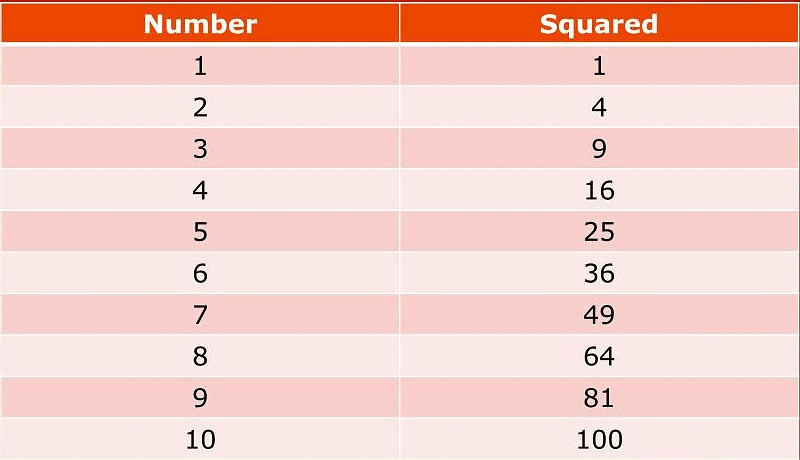Points to Remember: Squares & Square Roots | Mathematics (Maths) Class 8 PDF Download
| Table of contents |

|
| What’s a Perfect Square? |

|
| Properties of Square Number |

|
| Some Interesting Patterns |

|
| Solved Examples |

|

What’s a Perfect Square?
A natural number n is a perfect square if n = m², where m is a natural number. So, when a number is the square of another number, it’s called a perfect square!
Example:
9 = 3² (The square of 3 is 9)
25 = 5² (The square of 5 is 25)
Digits of a Perfect Square:
- If a number ends in 2, 3, 7, or 8, it can never be a perfect square.
- The squares of even numbers are even, and the squares of odd numbers are odd.
- A number ending in an odd number of zeros cannot be a perfect square.
Between Two Squares:
- Between n² and (n+1)², there are exactly 2n non-perfect square numbers!
The Pythagorean Triplet Connection:
- For any natural number n greater than 1, the numbers 2n, (n² - 1), and (n² + 1) form a Pythagorean triplet.
Square Roots
- The square root is the opposite of squaring a number!
Example: If you square 4, you get 16. If you take the square root of 16, you get 4.
Number of Digits in Square Numbers
If a number n has n digits, then the number of digits in its square root is:
- n/2 if n is even.
- (n+1)/2 if n is odd.

Square of a Number:
- When you multiply a number by itself, it's called squaring that number.
Example:
3 × 3 = 9 (This means 9 is the square of 3!)
5 × 5 = 25 (This means 25 is the square of 5!)

Perfect Square:
- A number like 16, which can be expressed as 4², is called a perfect square! But remember, not every number is a perfect square. For example, 32 is not a square number. So, always check if a number is the square of another number.
Remember
All-natural numbers are not perfect squares or square numbers, 32 is not a square number. In general, if a natural number ‘m’ can be expressed as n2, where n is also a natural number, then ‘m’ is the perfect square. The numbers like 1, 4, 9, 16, 25, and 36 are called square numbers.
Table: Square of numbers from 1 and 10.

Properties of Square Number

From the table, we conclude that:
Property 1: “The ending digits (the digits in the one’s place) of a square number is 0, 1, 4, 5, 6 or 9 only.”
Some Interesting Patterns
- Triangular numbers are: 1, 3, 6, 10, 15, 21, etc. If we combine two consecutive triangular numbers, we get a square number.
1 + 3 = 4, ‘4’ is a square number
3 + 6 = 9, ‘9’ is a square number
6 + 10 = 16, ‘16’ is a square number
and so on.

- 12 =1
112 = 121
1112 = 12321
11112 = 1234321 - 72 = 49
672 = 4489
6672 = 444889
66672 = 44448889 and so on.
Solved Examples
Example 1: What will be the unit’s digit in the square of the following numbers?1. 12487
2. 1324
3. 91478
4. 1251
Sol. The unit’s digit in the square of the following is:
1. 12487 is 9 (as 72 = 49, 9 in the unit’s place).
2. 1324 is 6 (as 42 = 16, 6 in the unit’s place).
3. 91478 is 4 (as 82 = 64, 4 in the unit’s place).
4. 1251 is 1 (as 12 = 1, 1 in the unit’s place).
Example 2: Comment on the square of an even number and of an odd number.
Sol. The square of an even number is always an even number and the square of an odd number is always an odd number. The square of an even number will always have 4, 6, or even zeros in its unit’s place. And the square of an odd number will always have 1, 5, or 9 in its unit’s place.
|
81 videos|423 docs|31 tests
|
FAQs on Points to Remember: Squares & Square Roots - Mathematics (Maths) Class 8
| 1. What is a square number and how is it calculated? |  |
| 2. What are some properties of square numbers? |  |
| 3. Can you provide some examples of square numbers? |  |
| 4. How do square numbers relate to square roots? |  |
| 5. What are some interesting patterns observed in square numbers? |  |
















